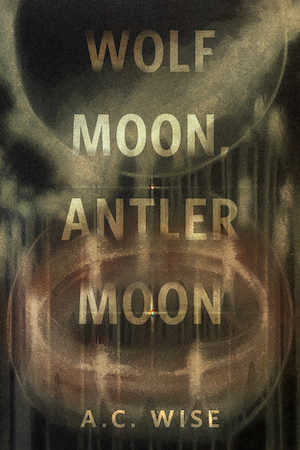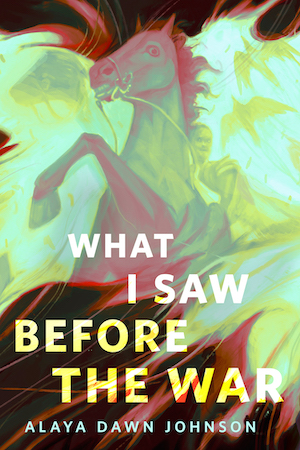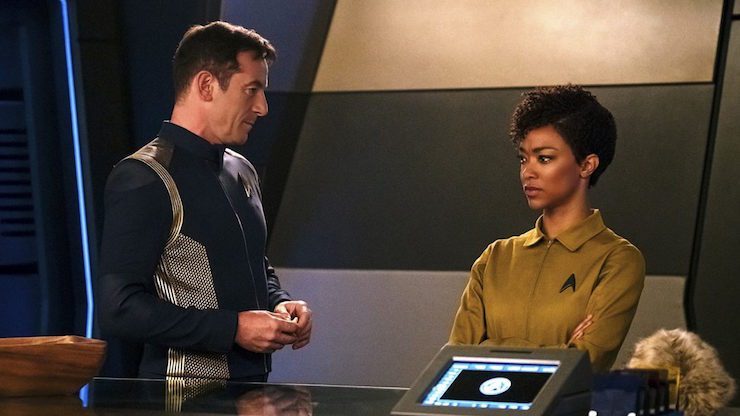Ah, the joys of the interregnum, the break, the between-seasons hiatus. It’s even more pronounced in an era when TV shows are less and less constrained by the seasonal model of seasons, as it were, with new episodes running around the same time that kids are in school.
Plus, seasons are even shorter now, for the most part, which is actually a boon to most shows. It reduces the filler episodes, the flashback episodes, and just generally has a tendency to tighten up the storytelling somewhat. However, an unintended side effect of that is that the actors are free to take on multiple jobs, but that also means it becomes harder to juggle everyone’s schedule, thus making the break between seasons even longer…
Luckily, we have something to fill in the gaps: licensed fiction. And Star Trek Discovery is doing a bang-up job in providing us with that, in both prose and comics form from the fine folks at Simon & Schuster and IDW.
First, a quick primer for them that may not know the ins and outs. Licensed fiction, or media tie-in fiction, has been around forever. It’s most commonly seen in the SF/fantasy field, though it’s hardly exclusive to that genre (as but one example, there was a long line of CSI, CSI: Miami, and CSI: NY novels in the 2000s; I wrote one of the CSI: NY books). Most large bookstores have a bookcase full of tie-ins at the end of the alphabet in the SF/F section, with books based on TV shows, movies, comic books, and games.
The way the process works is that a publisher buys the rights to do novels or short stories or comic books based on a particular property, and then turns around and hires creative people to produce those works of fiction. And every stage of the process has to be approved by the owner of the property—for TV and movies, it’s usually the studio that produces it, though not always. How closely the licensor works with the licensees varies from project to project, of course. Lucasfilm has famously managed the Star Wars tie-ins very closely, which has continued into the Disney era; Blizzard Games is much the same with World of Warcraft, StarCraft, and Diablo. Other licensors pretty much just rubber-stamp things, or only make minor corrections based on inside information that the publisher and writer may not have.
I mention this primarily because—while previous Star Trek productions have had, at best, a tangential relationship with the tie-in fiction that has been produced by Simon & Schuster since the novelization of The Motion Picture in 1979—Discovery has proven to be more hands-on.
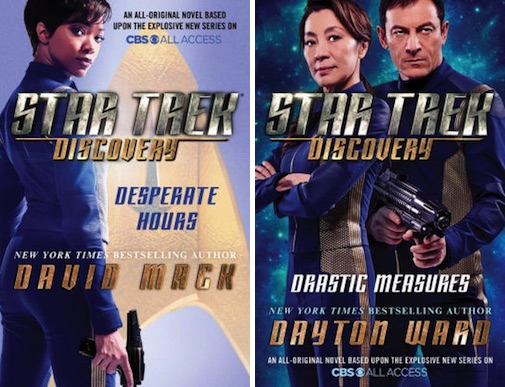
One of the staff writers on Discovery is Kirsten Beyer, herself a veteran Trek novelist, having done nine novels and a short story, with two more novels announced and in development. In addition to writing for the show (she wrote “Si Vis Pacem, Para Bellum“), she is serving as the point person for the Discovery tie-ins with both S&S and IDW. Beyer is working hard to make sure that the tie-ins work hand-in-hand as supplements to what we see on screen.
The first two Discovery novels have already been released, with a third on the way, and the approach to all three has been to provide backstory. Desperate Hours by David Mack focuses on Michael Burnham’s time on the U.S.S. Shenzhou, specifically chronicling Lieutenant Burnham’s first mission as acting first officer under Captain Philippa Georgiou, which served as her baptism of fire in the role of XO of the ship.
Aboard the Starship Shenzhou, Lieutenant Michael Burnham, a human woman raised and educated among Vulcans, is promoted to acting first officer. But if she wants to keep the job, she must prove to Captain Philippa Georgiou that she deserves to have it.
She gets her chance when the Shenzhou must protect a Federation colony that is under attack by an ancient alien vessel that has surfaced from the deepest fathoms of the planet’s dark, uncharted sea.
As the menace from this mysterious vessel grows stronger, Starfleet declares the colony expendable in the name of halting the threat. To save thousands of innocent lives, Burnham must infiltrate the alien ship. But to do so she needs to face the truth of her troubled past, and seek the aid of a man she has tried to avoid her entire life – until now.
The novel also sees the Shenzhou team up with another starship, and provides lots of background on several of the Discovery characters besides Burnham.
Released more recently is Drastic Measures by Dayton Ward, which goes further into the past and focuses on the TV show’s two now-deceased captains: Philippa Georgiou and Gabriel Lorca. The novel takes place during the events first mentioned in “The Conscience of the King,” to wit, when Kodos the Executioner was forced to declare martial law and commit atrocities against the population in order to keep the colony going.
It is 2246, ten years prior to the Battle at the Binary Stars, and an aggressive contagion is ravaging the food supplies of the remote Federation colony Tarsus IV and the eight thousand people who call it home. Distress signals have been sent, but any meaningful assistance is weeks away. Lieutenant Commander Gabriel Lorca and a small team assigned to a Starfleet monitoring outpost are caught up in the escalating crisis, and bear witness as the colony’s governor, Adrian Kodos, employs an unimaginable solution in order to prevent mass starvation.
While awaiting transfer to her next assignment, Commander Philippa Georgiou is tasked with leading to Tarsus IV a small, hastily assembled group of first responders. It’s hoped this advance party can help stabilize the situation until more aid arrives, but Georgiou and her team discover that they’re too late – Governor Kodos has already implemented his heinous strategy for extending the colony’s besieged food stores and safeguarding the community’s long-term survival.
In the midst of their rescue mission, Georgiou and Lorca must now hunt for the architect of this horrific tragedy and the man whom history will one day brand “Kodos the Executioner”…
This novel has the interesting distinction of being the only story to date that features the mainline universe version of Lorca, as the one we followed on television was revealed in “Vaulting Ambition” to be his Mirror Universe counterpart. It isn’t the first work of tie-in fiction to dramatize the events of Tarsus IV. Brad Ferguson’s 1991 novel A Flag Full of Stars has flashbacks to the time of Kodos featuring a teenage Jim Kirk. Both Avenger and Collision Course—two of the ten novels William Shatner his own self co-wrote with Judith & Garfield Reeves-Stevens from 1995-2007 that focused on Kirk—also show the massacre from his POV, and Greg Cox’s short story in the anthology Enterprise Logs, entitled “Though Hell Should Bar the Way,” has Captain Robert April and the U.S.S. Enterprise playing a similar role to that of Georgiou and her task force in this novel.
Upcoming is the third novel, which focuses on Discovery‘s best character, Saru, Fear Itself by James Swallow. Scheduled to be released in June, this novel, like Desperate Hours, will flash back to the days of Captain Georgiou commanding the Shenzhou.
Lieutenant Saru is a Kelpien, a member of a prey species born on a world overrun by monstrous predators… and a being who very intimately understands the nature of fear. Challenged on all sides, he is determined to surpass his origins and succeed as a Starfleet officer aboard the U.S.S. Shenzhou. But when Saru breaks protocol in order to prove himself to his crewmates, what begins as a vital rescue mission to save a vessel in distress soon escalates out of control. Forced into a command role he may not be ready for, Saru is caught between his duty and the conflicting agendas of two antagonistic alien races. To survive, he will need to seek a path of peace against all odds, and risk compromising the very ideals he has sworn to uphold…
No further novels have been announced as of yet. All three novelists are veterans of tie-in fiction in general and Trek in particular. Mack—who co-wrote two episodes of Deep Space Nine—is the author of the landmark Destiny trilogy, as well as twenty other novels, seven novellas, three short stories, and a comic book miniseries in the Trek universe. Ward, both solo and with his writing partner Kevin Dilmore, has penned seventeen Trek novels, thirteen novellas, eight short stories, one comic book story, and two travel guides. Swallow has “only” written five Trek novels, two novellas, three short stories, and, oh yeah, he also co-wrote two TV episodes, Voyager‘s “One” and “Memorial.”
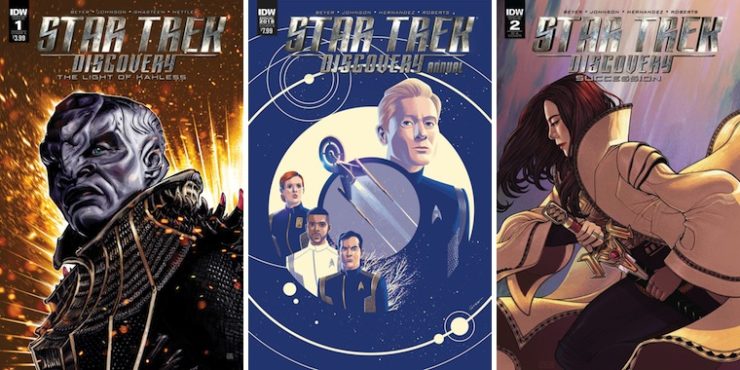
Over on the comic book side, IDW is also providing backstory tales that flesh out the situations seen on screen, with a mess of comics all written by Kirsten Beyer and Mike Johnson. Johnson has pretty much become the go-to guy for IDW’s licensed comics, as he’s been writing their comics based on the alternate timeline of the Bad Robot films. They’ve published the first two issues of The Light of Kahless, a four-issue miniseries that focuses on T’Kuvma’s life leading up to “The Vulcan Hello.” Art is provided by Tony Shasteen; issues 3 and 4 are still forthcoming.
At the end of March, we’ll see Star Trek Discovery Annual 2018, with art by Angel Hernandez. This one-shot will focus on Lieutenant Paul Stamets and his attempts to tame the mycelial network.
Finally, in April, IDW will debut Succession, another four-issue miniseries, for which Angel Hernandez will also provide the artwork. Less has been revealed about this, only that it ties into the second half of the season. Between that, and the cover image of what is obviously Emperor Georgiou, it would seem that Succession will provide the backstory of the Mirror versions of Georgiou, Burnham, and Lorca (and maybe Captain Tilly?) that we met in the four MU episodes of Discovery.
These novels and comics are a fun way to provide texture to the universe, fill in stuff that the TV show doesn’t have time to delve into, and provide some illumination with regard to the characters.
One last rant: some may dismiss the books and comics as not canon. And they’re not. Yes, Mack, Ward, Swallow, and Johnson have worked very closely with Beyer, an actual member of the writing staff. However, the folks who produce the show will not necessarily follow these stories moving forward. Tie-in fiction generally reaches less than 10% of the audience of the thing it’s tying into. One of the reasons why the Star Wars novels were rebooted and started over in anticipation of The Force Awakens after having a shared continuity for decades was because no filmmaker is going to take on a project that’s a sequel to six films that hundreds of millions of people have seen and then be told that, oh yeah, you have to read several hundred novels, stories, and comic books that only thousands of people have read, and not contradict any of them.
In 1996 and 1998, Jeri Taylor wrote two Voyager novels, Mosaic and Pathways. At the time, Taylor was Voyager‘s show-runner, and those two novels provided backstories for the entire crew, Janeway in the former, everyone else in the latter, which Taylor incorporated into episodes where appropriate. But Taylor left the show after the fourth season, and her successors did not feel obligated to use anything from those two novels when providing backstory for the characters. And this may happen again with Discovery.
Having said all that, who cares? Why stress about what’s real in a fictional construct? You know what else isn’t canonical? Christopher Nolan’s Batman trilogy. The entire Marvel Cinematic Universe. Peter Jackson’s six Middle Earth movies. The last decade has seen four different version of Sherlock Holmes, played by Benedict Cumberbatch, Robert Downey Jr., Ian McKellen, and Jonny Lee Miller, all of which contradict each other and none of which match the canon stories by Sir Arthur Conan Doyle. Christian Bale’s Batman is completely contradictory to Ben Affleck’s, and neither of them matches the canonical Batman seen several times a month in comic shops. Somehow, the world keeps spinning in the heavens.
So relax, sit back, and fill the time waiting for season two of Discovery to commence by reading some nifty fiction.
Keith R.A. DeCandido, who has reviewed every episode of Star Trek Discovery for this site, has made a career of writing tie-in fiction, and was even given a Lifetime Achievement Award for his work as both a writer and editor of licensed fiction in 2009 by the International Association of Media Tie-in Writers. His resumé includes quite a bit of Star Trek fiction, including prose for Simon & Schuster and comics for IDW. All together he’s worked in more than thirty different licensed universes, from Aliens to Zorro.




